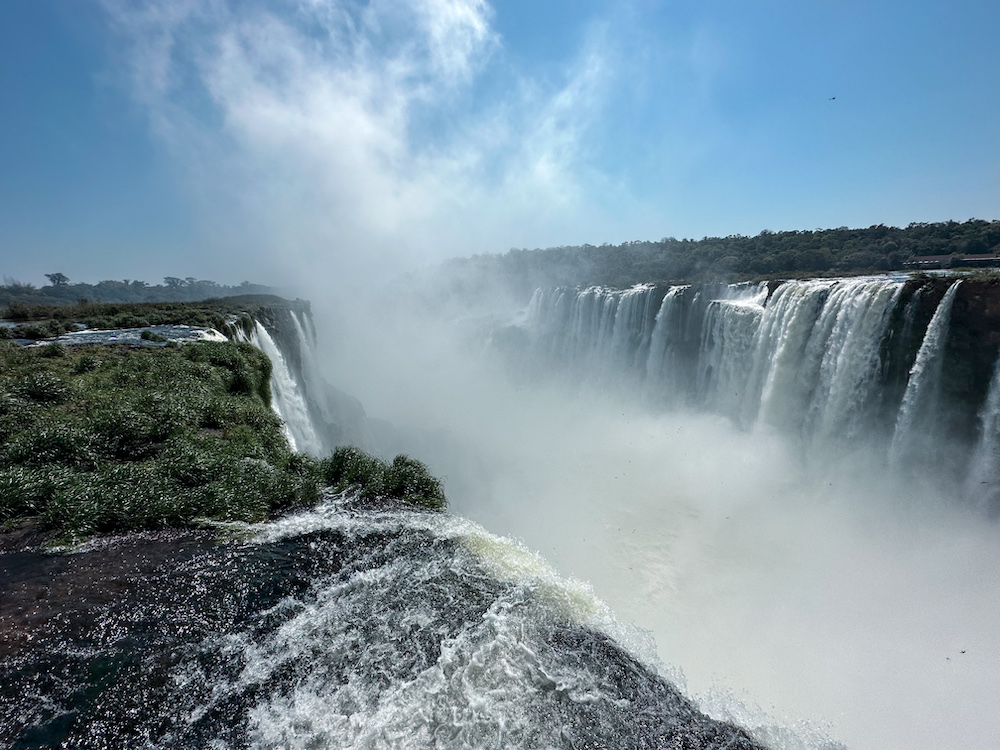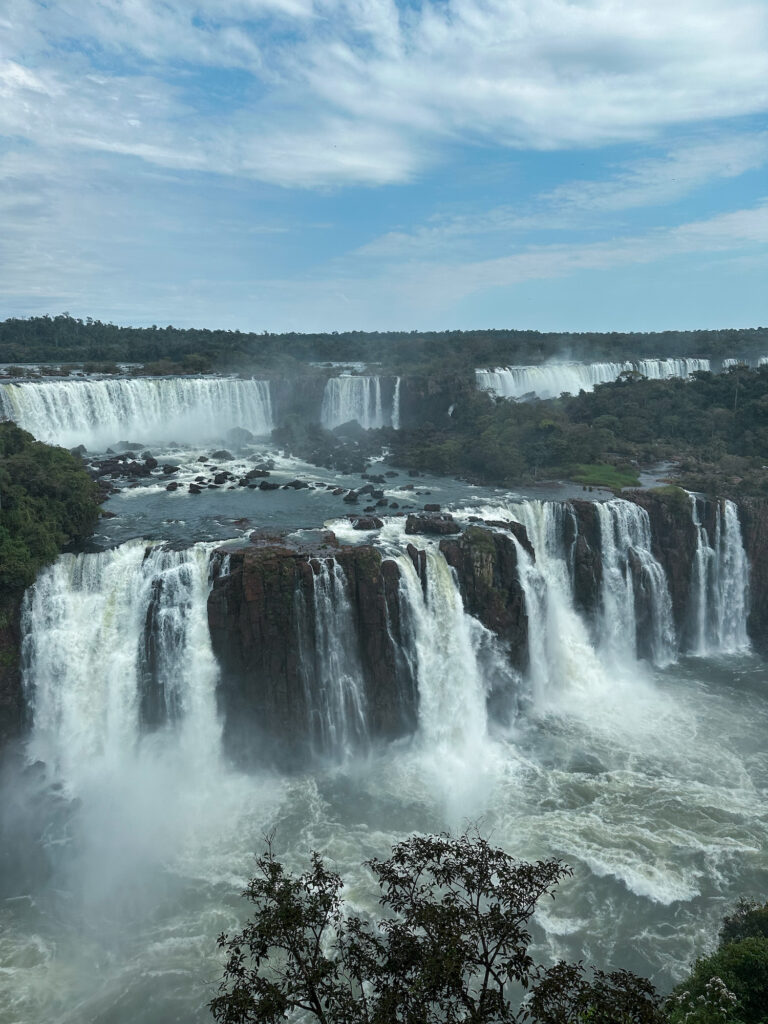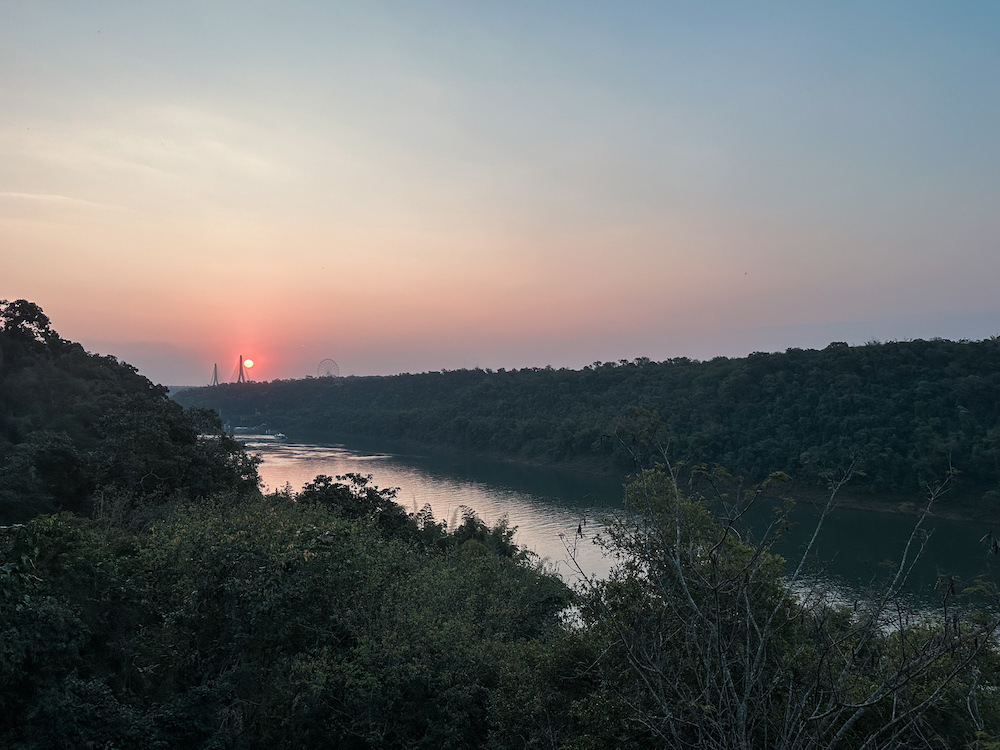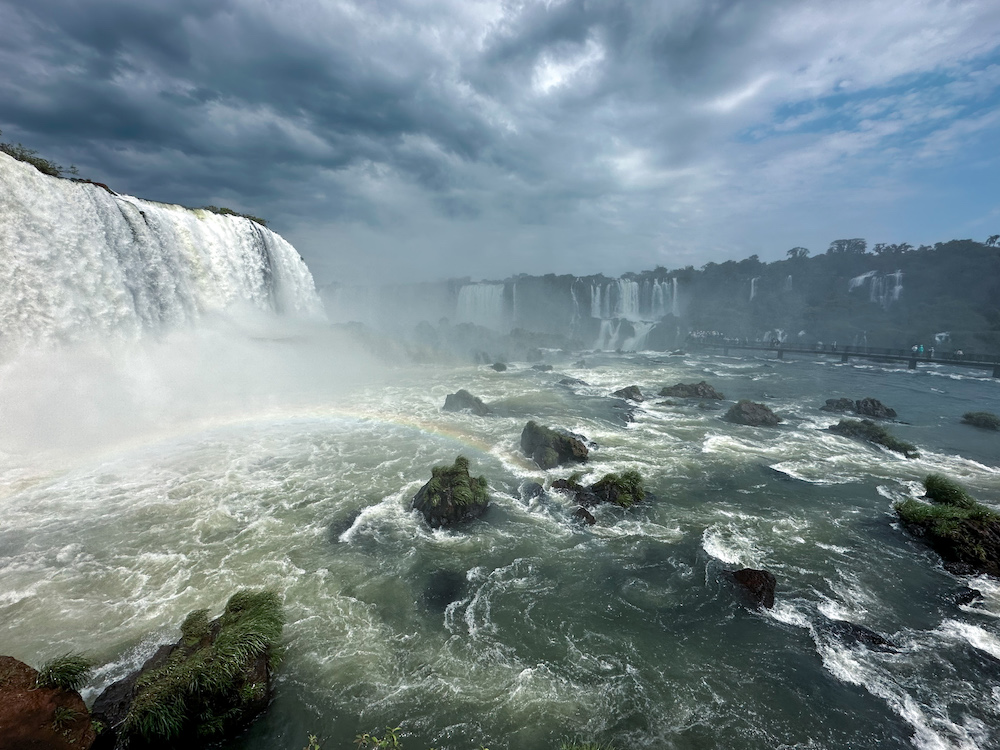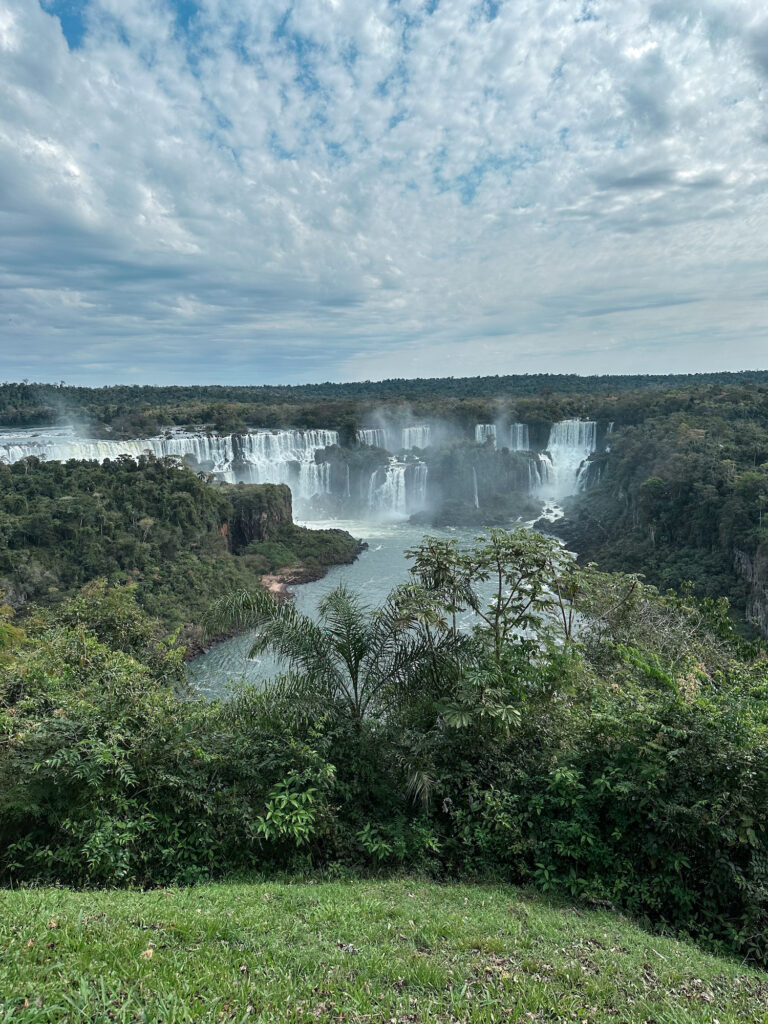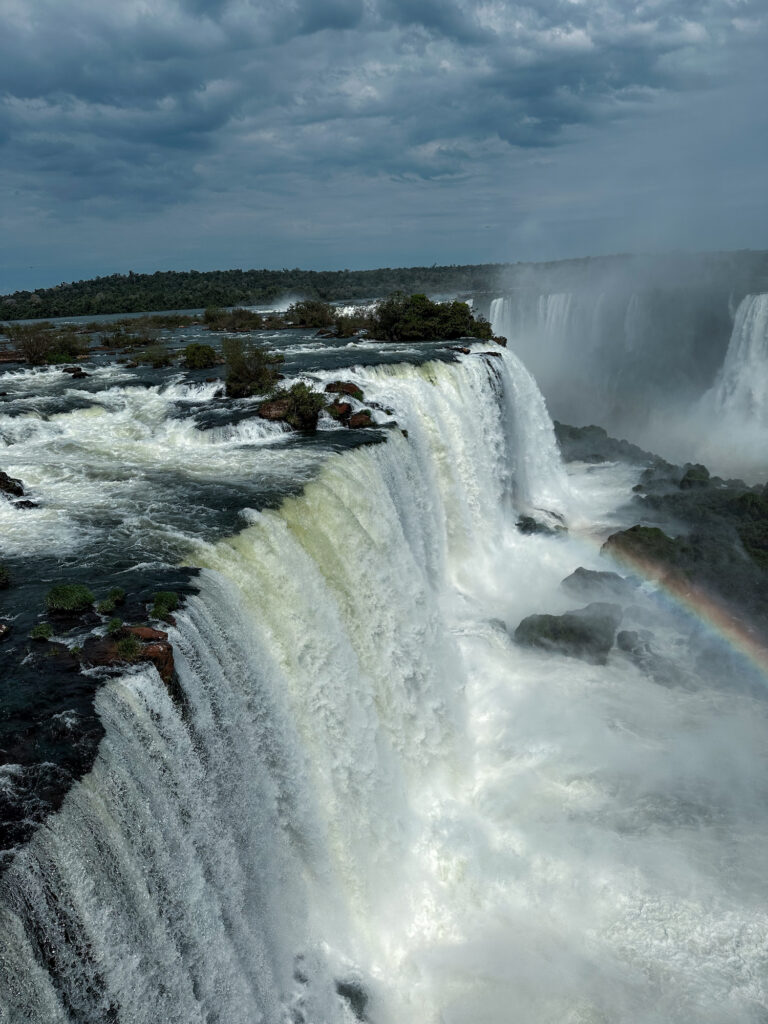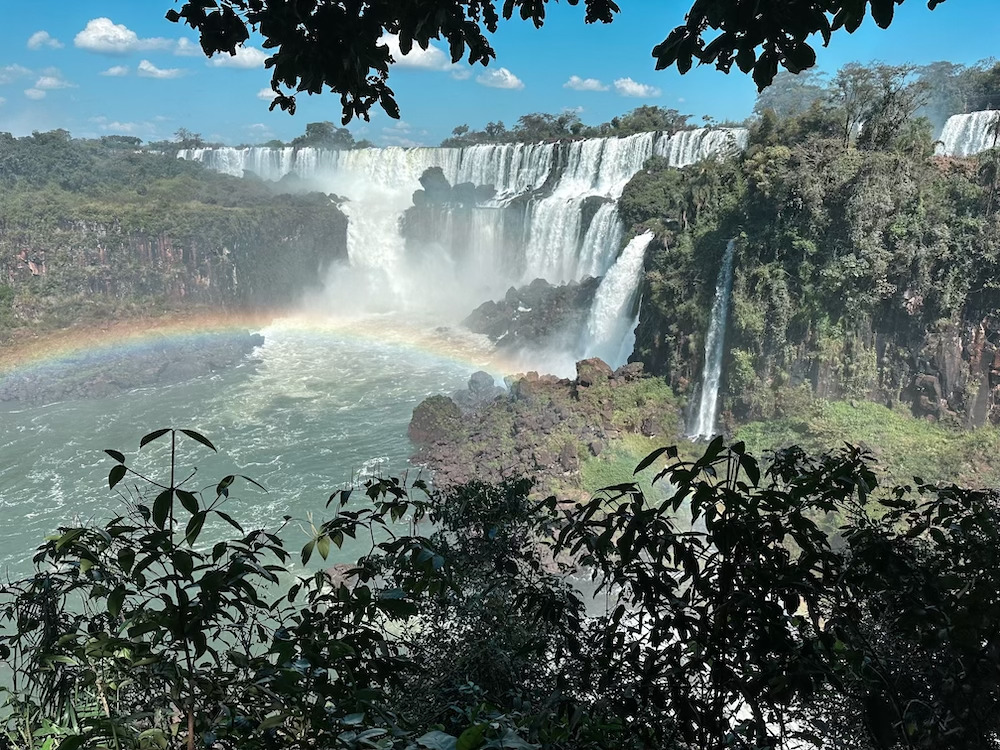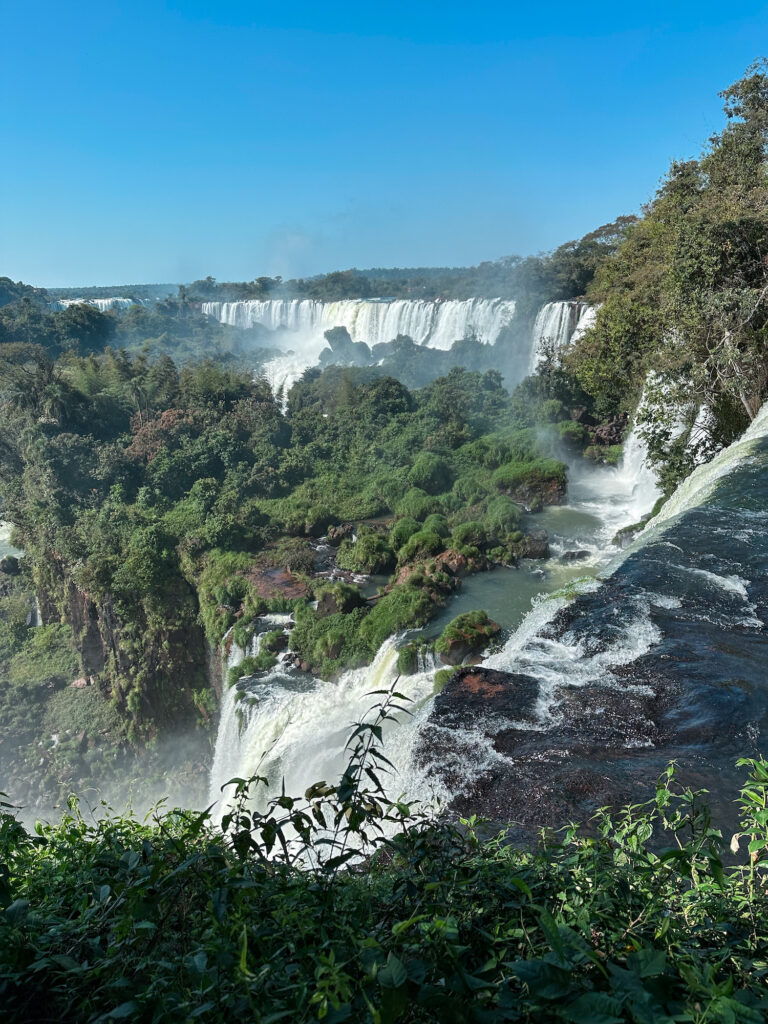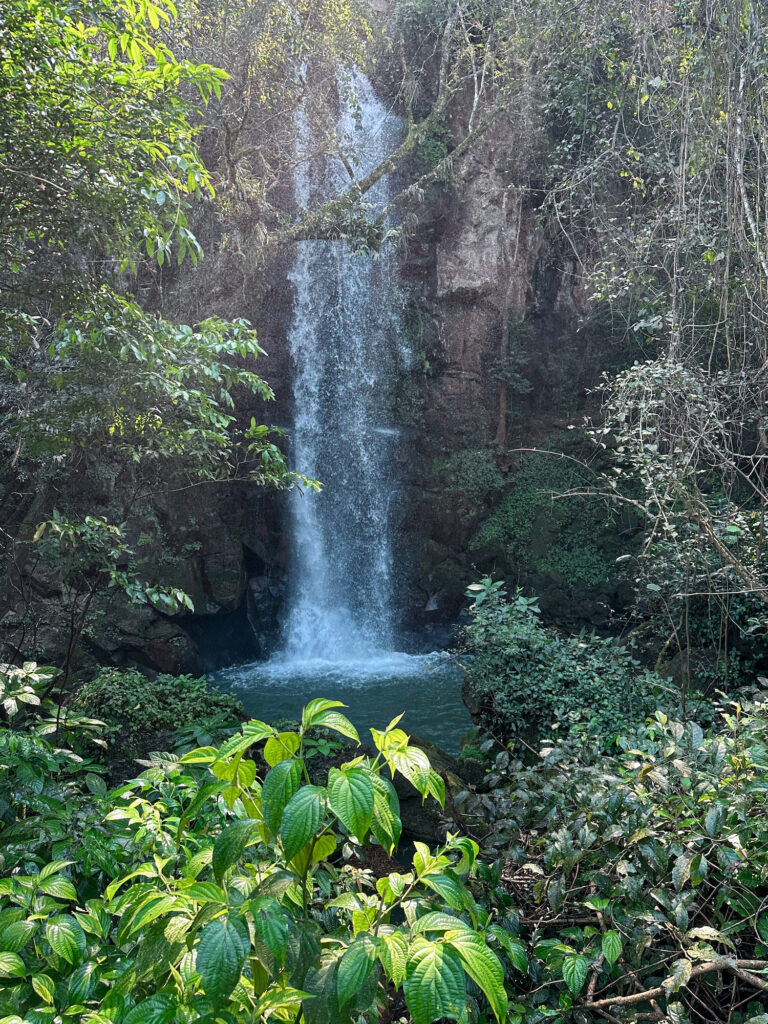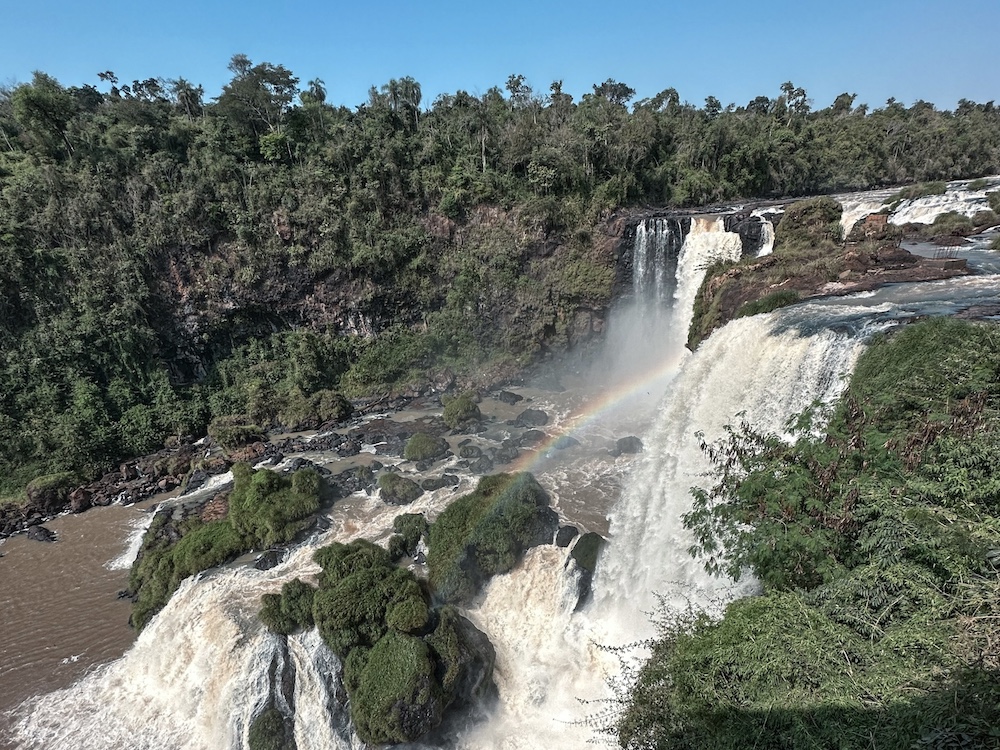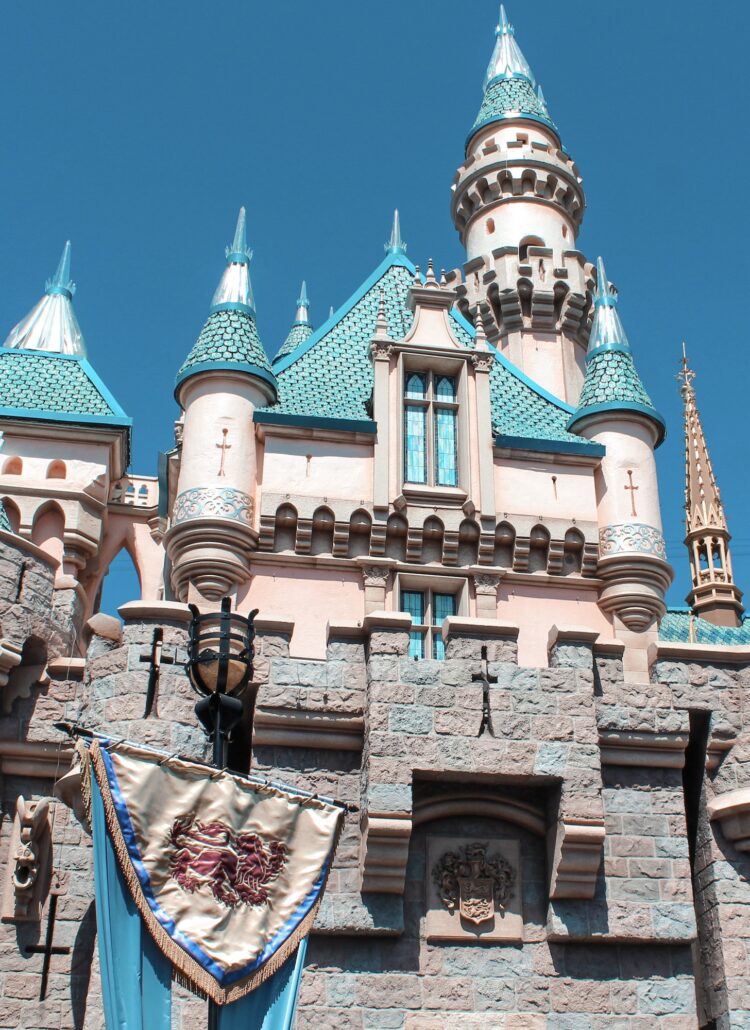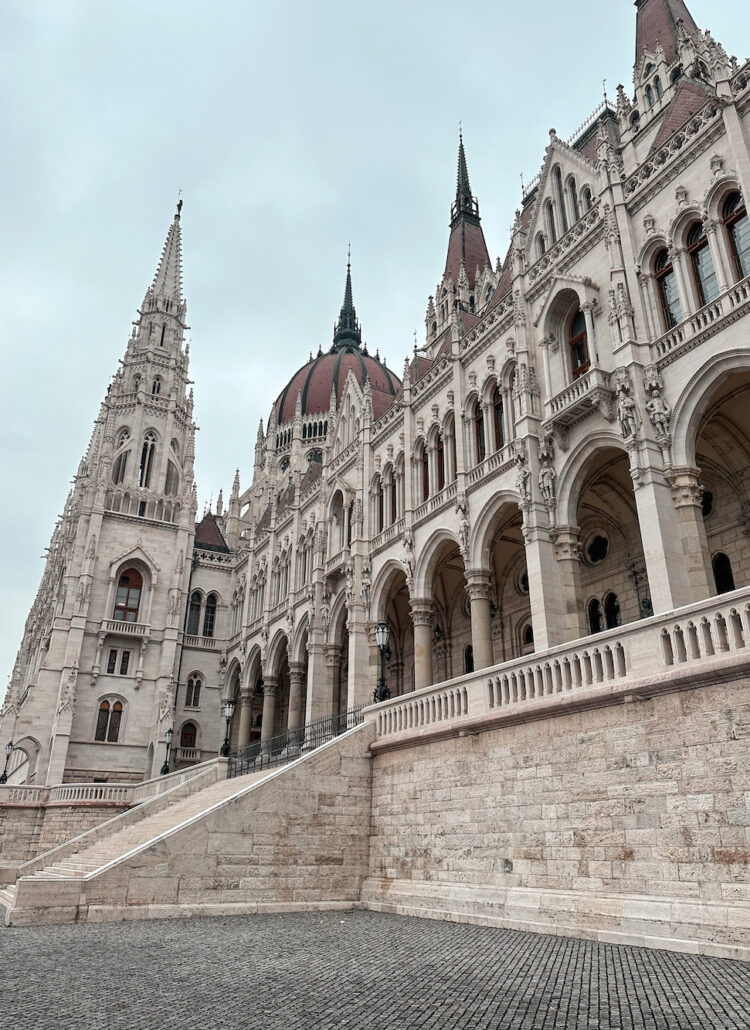Which Side of Iguazu Falls Is Better?
Which side of Iguazu Falls is better? If you’re planning a visit to this natural wonder of the world in South America, you might be wondering which side is better — the Argentinian side or the Brazilian side?
Iguazu Falls is shared between Argentina and Brazil, and there are national parks on both sides. There are 275 individual waterfalls at Iguazu Falls, the largest being named Devil’s Throat.
Personally, I’m of the belief that if you come all the way to Iguazu Falls, you absolutely should visit both sides. Each side offers something different, but they are both equally worth visiting.
This guide will compare the Argentinian side and the Brazilian side to help you discover the differences between the two sides, along with which ones are better for epic views, hiking, spotting wildlife, and more.
Getting to Iguazu Falls
Iguazu Falls is located on the border between Argentina and Brazil. It’s also very close to the border both countries share with Paraguay. The only logical way to get to Iguazu Falls is by plane.
From Buenos Aires, you can fly to Puerto Iguazu, the city on the Argentinian side of the falls. From Rio de Janeiro or Sao Paulo, you can fly to to Foz do Iguacu, the city on the Brazilian side of the falls. Flights from any of these major cities take between 1.5 and two hours with multiple daily flights available.
You could also theoretically fly into Ciudad del Este in Paraguay, but more likely than not you’ll be coming from a major city in Argentina or Brazil and so this option doesn’t make as much sense.
There are overnight buses you can also take to get to Iguazu Falls from Buenos Aires, Rio de Janeiro, and Sao Paulo, but honestly, these aren’t much cheaper than flights, which can be under $100 round-trip. It’s not worth saving a small amount of money for twenty hours on a bus instead of a quick flight.
How Much Time for Iguazu Falls?
I recommend spending two full days and three nights at Iguazu Falls. Arrive in the evening, visit the Brazilian side of the falls the next day, do the Argentinian side on your second day, and then leave the next morning. This will allow you to have a relaxed visit and take your time rather than feeling rushed.
If you don’t want to spend three nights at Iguazu Falls, you could also just do one full day and two nights. On your arrival day, you can do the Brazilian side if you arrive in the morning, since it’s smaller and doesn’t necessarily require a full day. Then you can do the Argentinian side on your one full day.
I don’t recommend visiting both sides in one day if you can help it. The Argentinian side is much larger and you can easily spend a whole day here. Plus, you will lose some time in transit and crossing the border.
I definitely don’t recommend flying in and out the same day. I’ve seen some packaged day trips offering this, and not only are they extremely expensive, you’ll barely have time to appreciate the falls.
Where to Stay in Iguazu Falls
When I visited Iguazu Falls, I stayed in Puerto Iguazu on the Argentinian side. Personally, I prefer the Argentinian side to the Brazilian side because it felt less developed and like there was more of a focus on nature conservation. Also, the exchange rate made Argentina much cheaper than Brazil when I was there.
I stayed at Iguazu Jungle Lodge and I highly recommend it. This is a great four-star hotel with views of the Iguazu River from the balcony rooms. There are also nice amenities like a swimming pool, a recreation room, and a delicious free breakfast buffet. (I couldn’t get enough on the pan de queso, or cheese bread.)
This hotel is also walkable into the town of Puerto Iguazu, where you can find lots of restaurants and shops. The hotel can also arrange a driver to take you to both sides of the falls for a good price.
I have a whole guide on where to stay in Puerto Iguazu if you want to see other options. Most hotels in Puerto Iguazu are 20 to 25 minutes from the Argentinian side of the falls, and 30 to 35 minutes from the Brazilian side of the falls. (And reverse those times if you decide to stay in Foz do Iguacu, Brazil!)
Brazilian Side of Iguazu Falls
Now let’s get into a comparison of both sides of the falls! On the Brazilian side, you have Iguacu National Park. (Note the slightly different spelling between Portuguese and Spanish.)
Iguacu National Park is smaller and many people consider it to have the better views of the falls. As I sat down to write this guide, I wasn’t sure I agreed with that, but then when I started reviewing my photos from both sides of the falls, I realized that the Brazilian side does in fact offer more impressive views.
The way the Brazilian side is set up, you are essentially following one route along the falls with various viewpoints, culminating in a walkway that brings you up close and personal with the mighty Devil’s Throat waterfall. There are a couple of other nature walking trails that you can check out before you go, too.
In total, I’d say you need about 2.5 hours for Iguacu National Park, although you can definitely spend more time here if you take your time and stop to sit down for a picnic lunch, take lots of photos, etc.
You can also do a boat ride in Iguacu National Park, although I heard the boat ride is actually better on the Argentinian side. (I didn’t do it on either side because I didn’t want to get wet!)
The city of Foz do Iguacu on the Brazilian side of the border is very built up. I guess this surprised me, because for some reason I pictured Iguazu Falls being out in the middle of the jungle — this is definitely not the case! Foz do Iguacu has giant shopping malls, water parks, and other tourist attractions.
Argentinian Side of Iguazu Falls
Iguazu National Park on the Argentinian side of the falls. It’s the larger of the two, with more trails and viewpoints. Whereas the Brazilian side offers more sweeping views of the falls from a distance, the Argentinian side allows you to walk right alongside many of the waterfalls, offering a different perspective.
You can easily spend six hours or more at Iguazu National Park if you want to do all the trails. The top trails to do are the Upper Circuit, the Lower Circuit, and the Devil’s Throat Trail. The Macuco Trail is another good walk through the jungle. Your entry ticket also includes access to the Tren de la Selva.
This train connects three different stations around the park so it can save you some walking time. When it comes to hiking, there are definitely more and better trails on the Argentinian side of the falls.
Between the two parks, I’d say that the Argentinian side is better for spotting wildlife. Everywhere I went during my day here, I spotted playful capuchin monkeys swinging from trees and signposts.
You can also do a boat tour at Iguazu National Park, and as I mentioned before, I heard the views are better from the Argentinian side (although I didn’t do a boat tour myself so I can’t confirm it for sure.)
I found that the Argentinian side of the falls felt less developed and more focused on nature conservation. The city of Puerto Iguazu is also a lot smaller, although still with plenty of tourist restaurants and shops.
Other Things to Do Near Iguazu Falls
If you have more time in Iguazu Falls, there are several other things you can do nearby.
On the day that you visit the Brazilian side, since it is smaller, I would also recommend visiting the Parque das Aves. This is a great bird sanctuary with more than 1,000 species living there.
I was also really interested in crossing the border into Paraguay on my trip. I actually spent three full days at Iguazu Falls (not necessary, two is fine) and on one of those days, I went to Paraguay. Ciudad del Este is a fascinating and chaotic border city that forms the triple frontier with Puerto Iguazu and Foz do Iguacu.
I also went to Monday Falls, which would be impressive if it were located anywhere else in the world, but is unfortunately overshadowed by its proximity to Iguazu Falls. If you’re a country counter like me, it might be worth taking a day trip into Paraguay, but otherwise, I’d say it’s not a must-do.
Best Time to Visit Iguazu Falls
When should you visit Iguazu Falls? This is an important factor to consider!
Being located in the Southern Hemisphere, the seasons at Iguazu Falls are flipped, so December through March is summer and the hottest time of year to visit. December and January are also very crowded months to visit because many local tourists from Argentina and Brazil are on their summer vacation.
March is a good month for lower crowds, although April can be very busy with the Easter holidays. May and June are excellent months to visit because the weather is more pleasant and there are few crowds.
July is winter vacation, so the parks become quite crowded with local tourists again, all the way through August. Things quiet down again at the end of August, which is when I visited. This was a good time to visit because the weather was still mild and it wasn’t too crowded. Same goes for September.
October and November are also good months to visit, although the weather starts to get hotter again.
Weekdays are always going to be better than weekends because you’ll avoid many of the local tourists. If you’re visiting on a weekend, I recommend arriving in the morning right when the park opens.
Which Side of Iguazu Falls Is Better?
So which side of Iguazu Falls is better?
Hopefully this guide convinced you to visit both sides! I do think the Brazilian side offers more epic views of the falls, but the Argentinian side has unique views, more hiking trails, and better wildlife-spotting opportunities. So I can’t say one side is definitively better — they complement each other well.
Enjoy your trip to Iguazu Falls!
Related Guides:



